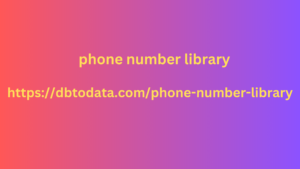With the development of technology from past to present and the increasing use of new tools, there are parallel differences in the services in the translation sector. When it comes to translation, it is no longer just the translation of a text from one language into another that comes to mind, and the demands presented to translation offices within the scope of translation services are also changing. The increase in audiovisual translation services brings with it the needs and demands for different areas. Audiovisual translation is a field that covers subtitle and voice-over translations of productions such as movies, series, documentaries, news, and advertisements.
With the globalizing world, the demand and need for voice-over translation and dubbing translation for video content increases. You can request professional voice-over to achieve a quality result in voice-over translation services that require appropriate equipment and expertise. Voice-over and dubbing are services that involve different stages and factors.
It is important to reveal the difference between the two concepts in order to meet customer demands within the scope of translation services and to progress the process correctly. What is Voiceover and Dubbing? Voice-over is the reading of the texts that constitute the visual or auditory content made for promotional, narrative and advertising purposes by a voice-over artist, taking into account certain elements such as diction, emphasis and intonation, and recording them in a studio environment.
It is a service needed in different What You Need to Know About Voice Over Service
Productions such as advertising voice-over, promotional film, switchboard voice-over, radio and television commercials. Since there is usually a voice narrating the scene in the background, needs such as e-book voice-over, which is widely used in documentaries , also arise with the developing technologies. Voice-over is also known as off-camera or off-stage commentary. It is a technique where a voice is used in television, radio, film production, and theater without having a character counterpart. For example, people speaking in commercials, bus stop announcements made in subways, switchboard announcements, and the voice we hear in the background in educational videos are examples of voice-over.
Telegram Data: Telegram facts, which phone number library includes consumer interactions, organization chats, and channel hobby, gives wealthy insights into cause market engagement. Businesses can leverage this statistics to investigate consumer opportunities, show display dispositions, and enhance marketing and marketing strategies. Telegram’s normal platform furthermore ensures privateness, making it a popular preference for data-driven communications.
Dubbing is the name given to the process of re-speaking characters in a different language or in the same language in projects such as documentaries, films, and series. Usually, the artist dubs in studios used as dubbing studios with the same expressions and appropriate synchronization according to the voice and facial expressions of the character he is dubbing. Lip sync in the same language is very important when dubbing, but if the dubbing is done in a different language, since lip sync is quite difficult, importance is given to the duration at this point. In some cases, a dubbing artist with certain theatrical talents is sought depending on the type of production being worked on.
Despite the increasing What You Need to Know About Voice Over Service
popularity of voice-over and subtitles, dubbing and lip syncing are also one of the preferred services to be able to watch video content in another language. In translation for dubbing, the translator adapts the dialogue lists of the original text to the foreign language, so that the lips and timing are synchronized with the screenshots. In order for the dubbing of video content to be done properly, the video text should be translated by a team of experts in this field. For professional and high-quality dubbing services, translation offices work with freelance dubbing artists or a dubbing agency after the translation phase. There are well-known Turkish dubbing artists in our country who do this job professionally . We often come across these familiar voices in animated films, e-books or foreign films.
A voiceover usually consists of a narrator reading translated text over video, while dubbing means that professional voice actors will mimic the mouth movements of the actors we watch, replacing the original dialogue with new, translated audio. How to Translate Voice-over? Voiceover translations are needed in various areas. For example, voiceovers may be needed for shows exhibited by cinemas, television channels, voiceover studios that provide translation services for digital platforms, intermediary institutions and companies, and film distribution companies, as well as larger institutions such as film festivals, cultural centers, museums, and galleries.
The subtitle translator and What You Need to Service
This text is considered separate from other types of text because it includes elements such as image, sound, and intonation. You can get professional translation support for your voice-over translation needs for short films, videos or audio recordings. Voice-over translation, like other types of translation, is a type of translation that requires attention.
While the quality of the sound is important, it is also very important that there is no background noise. The slightest noise and a second sound in the background will affect the work of the voice-over and the sound recording. Voice-over artists use a voice recording studio for a professional voice-over. Some voice-over artists who have a home recording studio can also produce very high-quality work in a home environment. The average speed of voice-overs is usually 2.5 words per second, which corresponds to a minimum of 150 words per minute. When reading at a slower speed, a voice-over artist can read 120 words per minute, and when reading faster, a maximum of 200 words per minute.
This number varies by language
For example, English is a language with low information density and an average speaking speed. While Spanish is a fairly fast-spoken language, German is quite slow. In languages with long words, such as German, the number of words that can be spoken in a minute decreases. Therefore, a 1-hour audio or video recording is expected to contain 6,000-7,000 words.
For example, in synchronous voice-over, voice-over artists should speak where the speaker is speaking and not when he is silent, otherwise bahamas mobile phone numbers details there will be a shift in both the image and the sound. In the training video voice-over process, if the voice-over does not speak while the instructor is speaking or if the voice-over speaks when the instructor is silent, it will also confuse the listeners.
For a customer who needs Arabic voice-over , the first step is to take into account the different dialects of Arabic and first transfer the translation into the appropriate language and then have the voice-over done. The quality of the text that will go to the voiceover is also very important.
For example, in foreign language Voice Over Service
Voice-over translation is an inevitable step in making any video, film or audio recording reach a larger audience and make it more universal. Voice translation involves combining the script and formatting it with timecodes, just like dubbing. Once this is done, the voiceover begins, but you need to make sure that the translators are aware that this is a voiceover script. So they need to pay attention to the length of the language they are translating.
Then, to record the translations in a studio, the native voice actor will watch the video and record the voiceover, matching their speech to the character speaking on screen. Finally, you need to have the sound engineers insert the dubbed track into the original audio track and create the final video. What Should Be Considered in Voiceover? First of all , the voice actor must analyze the text well. He/she must grasp the emotion of the text well and read with emphasis and intonations according to the emotion. He/she must pay attention to the tone and speed of the speaker’s voice; he/she must use emphasis and intonations accordingly. Considering that each voice actor has a certain voice color and style, it is generally necessary to choose a voice actor that is suitable for the spirit of the text and the speaker in the original production , if any.
For example, if there is a What You Need to
Speaker speaking at a slow tempo, the voice actor’s fast speech will confuse the people watching the video. Similarly, if the speaker in the original recording speaks very fast and excitedly, the voice actor’s slow and calm speech will have the same effect on the audience. When choosing a voice actor, attention should also be paid to the similarity of the voice tone of the original speaker and the voice actor. At this point, in order to increase the quality of the work output and ensure mutual satisfaction, a healthy communication should be established with the voice actor and the voice actors should be directed in line with customer expectations.
The recordings that voice-overs take are always longer than the final recording. The reasons for this can be listed as; pauses made by the voice-over while recording, unwanted sounds such as coughing and sniffling, and starting a sentence that was ew leads left unfinished with the idea that a better intonation could be made. In voice-over jobs, in addition to deleting unwanted parts, bringing the voice to the desired technical specifications is considered within the total duration of the voice-over job. A professional voice actor can record an average of 800 to 1,000 words per hour. A voice actor who works 7 or 8 hours a day can be expected to record a maximum of 4 or 5 hours of voice per day. As a result, we can assume that he can record an average of 3,000 to 4,000 words in total.
A voice actor who works What You Need to
faster can voice 5,000 words per day. However, you should calculate the daily productivity of a voice actor by considering that voice actors will also spend time editing the recordings they receive. How is the cost of voice-over translation calculated.
Both the actual volume of the work is known more clearly and a clearer voice-over fee calculation can be made for the customer. As with other translation services, the cost of voice-over translation is calculated based on criteria such as the language of the text to be translated, the target language, the number of words, the time it takes to complete the translation and voice-over process, and the level of urgency. Therefore, it is important to correctly determine your needs with your service provider for voice-over translation over your video or audio recording.


